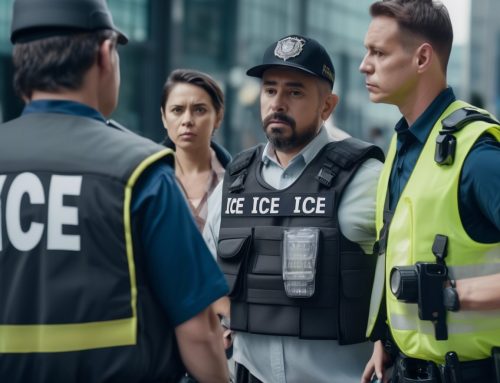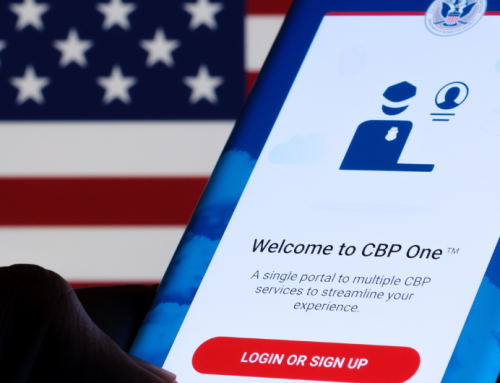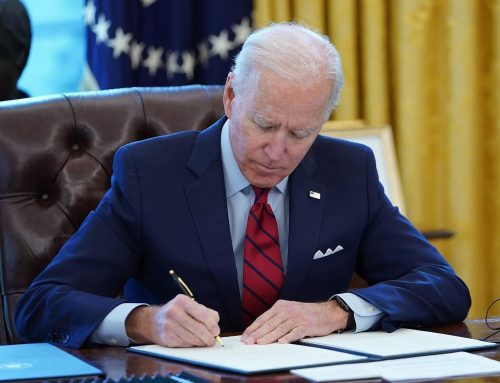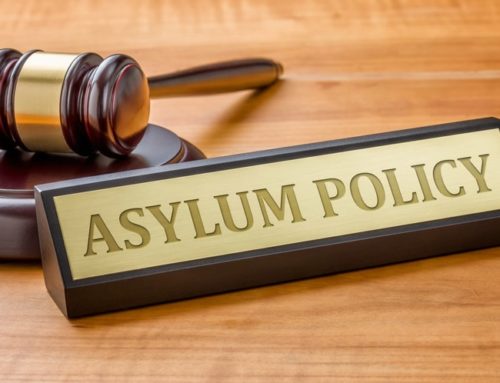
10 Things You Should Know About Evidence for Asylum Case
As an asylum seeker, it’s essential to present a compelling case highlighting the persecution or fear of persecution you may face in your home country. Gathering strong evidence can significantly increase your chances of success in your asylum application.
With that in mind, attorney Ismail Shahtakhtinski, founder of IS Law Firm, shares these 10 things every asylum seeker should know when preparing evidence for his or her asylum case.
- Written statement is very important for your asylum case.
You should never submit the firm I-589 without your written statement describing your background, events, and the reasons why you cannot return to your country. Theoretically, you can win your asylum case without a written statement and evidence. However, in practice that is highly unlikely. Your Asylum Declaration is your written statement which explains in detail why you left your country and why you are afraid to return. Use simple language. Do not write in complicated, legal, or poetic language. It must be easy to read and understand. Use short sentences. Be specific and include all incidents and events in your declaration. - Use circumstantial evidence, do not get stuck with looking for direct evidence necessarily.
What does it mean? Very often it’s hard to find any direct evidence, like medical reports, police statements and videos. Imagine you are an asylum seeker who was tortured. In lots of cases circumstantial or secondary evidence is totally fine! This evidence may be in form of letters, documents, or pretty much anything that corroborates your story.For example, we had a client who was alleging that he was attending some religious meetings and was persecuted because of that. He was detained and threatened because of that. When gathering evidence for his asylum case, we did not try to get a video recording of him entering the mosque three years ago. We did not try to get the police confession that they threatened this man. We asked his employer to write a letter confirming that he left the job earlier on that particular day and did not show up at work the day after. This circumstantial evidence corroborated his story. - How to get statements from witnesses.
If you have a witness, for example, you have somebody who knows that you were persecuted, it would be very helpful to include their testimony in your case. He or she could provide a letter confirming whatever they observed, saw, or noticed. Our clients often ask how and what is the better format to do so?
- The best format, obviously, is if it’s a notarized statement. For example, suppose that witness is in another country. In that case, it may be easy to get a notarized statement from that person. But in many countries, the notary public is a government employee, or they are licensed by the government. A person who witnessed something wrong done by government officials may be hesitant to provide such a statement in front of a notary public. is there are alternatives.
- The second priority is to get a simple letter. It can be scanned and emailed, with a copy of the author’s identification document.
- If the author is not willing to type, sign, scan and email a letter, then they can simply send you a note in the email or via social media. Again, attaching a copy of the Id would be very helpful.
- What is they are not willing to send an email too, then you can get creative. In one case, we asked the author to describe what happened in a Zoom call and we recorded that call and then transcribed it and got it translated.
- The rule is that even a simple note via social media is better than nothing.
- Be creative with gathering your asylum evidence.
Sometimes gathering evidence is pretty challenging. We often have difficulties getting statements from witnesses. It is a typical situation when the asylum seekers tell us: “I tried to ask this person if they would confirm, but they refused. They’re scared”. We would ask: “Well, how do you know they’re scared?”. And the client would show us a WhatsApp message where the witness tells them that they are too scared to help. That’s a good document! You can screenshot those messages and use it as evidence.
We had an asylum seeker from Iran. He was summoned to court after he came to the United States, and we wanted to use this fact as supporting evidence that he was being persecuted by the government. The asylum seeker had relatives who were taking care of his house. They were the ones who received the court summons on his behalf. But they would not testify because they were too scared. So, we asked the client: “How do you know there were any court summons?”. He said: “Well, my relatives showed it to me via Skype.” We had the client talk to them again via Skype and ask them to show the document again, in the meantime taking a photo or doing a screenshot. - A refusal to give evidence or attempts to get evidence can also serve as evidence. Keep record of attempts!
For example, if you are seeking a crucial document for your case, but it’s missing, you can submit evidence that you at least tried to get that evidence. It is often useful to hire a lawyer in your home country to make an inquiry on your behalf to request the document which is missing. For example, as we all know, when the police unlawfully detains protesters, they often do not create a record of such arrests. Even if there is no such evidence, an attorney in your home country can make an inquiry on your behalf and can provide a letter confirming that they made an attempt. Better yet, your lawyer can also add a statement in that letter describing how the police in your country usually does not formally make records of unlawful arrests of protesters. You can also ask a friend or family member who lives in your country to try to get that document, and, if they fail, they can write an affidavit saying something like this: “I was asked by my relative to get this document. I went and tried, but that document was unavailable, or they didn’t want to give it to me”. It may sound strange, but this is also evidence. - Keep evidence of how you received the evidence.
A classic example is a print-out of the email from the witness which had their statement as attachment. Or it can be envelopes of mail received. Same goes with social media messages, do not copy and paste messages but use screenshots and show who sent the messages. Tip about mailed documents: If someone is mailing you a document or letter, make sure to ask them first to email you a scan. International mail has a tendency of getting delayed or lost. - Use country condition reports.
Often a good corroborating evidence can be found in the country condition reports from the US Department of State, other federal agencies, or human rights organizations, news articles about similar incidents which prove your point, and corroborate with what you described in your story. - Do not forge documents.
Unfortunately, lots of asylum seekers are advised to produce some fake documents to prove their story. There is a cottage industry producing fake police and hospital reports.
In many countries of the world, you can pay to get any document you want, even a death certificate and the US government knows this. The US government is aware that “police reports”, “hospital records” can be bought. Do not underestimate the asylum officers or immigration judges. The USCIS officer would easily understand if the document is fake or suspicious. And you will be denied asylum because if you produce fake documents. - Too much evidence can be suspicious.
Sometimes we get prospective clients who show us pictures of them getting arrested, pictures of being slapped by the police, and then medical records stating that the applicant was bruised. This type of evidence can raise more questions than answers. In reality, in most cases police wouldn’t pose for your relatives to take pictures of you getting arrested and you probably wouldn’t seek medical attention for being slapped in the face. Once in a while we see a selfie of an asylum seeker with a police officer who brought the court summons to this political activist’s door. We are always super suspicious, and the asylum officer will be too. Will a political activist do a selfie in the heat of a moment with a police officer? Won’t they be scared if that country is an autocratic dictatorship which uses police to threaten and kill the opposition? These are the questions that will come up. - You may not even need any evidence at all.
Your written statement and your oral testimony (at asylum interview or in court) is the most important evidence. As part of the requirement under the Real Id Act, you must try to gather as much corroborating evidence as you can. But, if you have made attempts or if there is no evidence that can be gathered, you may still be able to get asylum without any documents. Clients often ask us: “This happened to me, but I don’t have any proof. Should I mention that in my asylum application?”. Yes, you should! If don’t have proof that doesn’t mean it didn’t happen. And down the road, during your asylum interview or court hearing, when this issue comes up, you can explain and use your words to prove that it happened.
Remember that each asylum case is unique. Some will require a lot of evidence and others will not. Talk to your lawyer and go through the process and identify what is best for your case. If you’re seeking asylum and need legal assistance, our team is here to help. To schedule a consultation please use this link: Schedule a Consultation – I.S. Law Firm, PLLC






